
This is a placeholder text
Group text
by Ibrahim on 12 August 2013 - 10:08
Croup length: To demonstrate difference between Peik's and the Black dog's croups, here are length measurements, we care for proportions here and not absolute values of lengths, proportions in drawings and pictures give credible values, absolute lengths do not because a picture does not represent actual lengths, sizes but give fraction of them, relating one measurement to another remains true, measurement of angles between lines remains same as that of actual figure pictured.
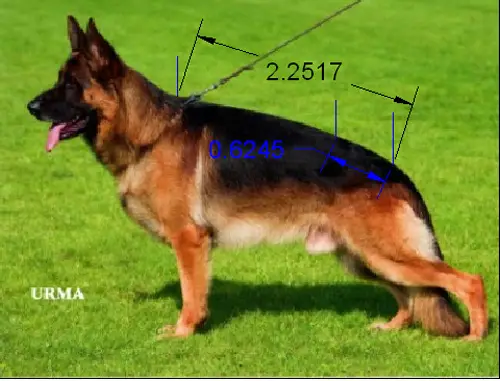
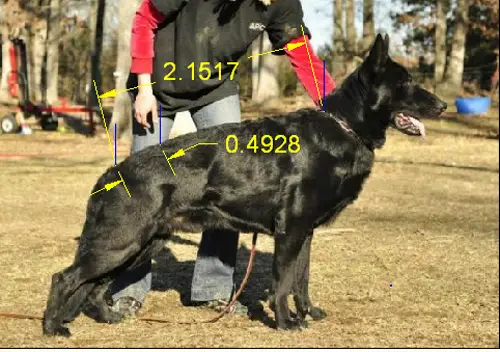
1st dog: If you divide croup length over total back length, 0.6245 / 2.2517 you get 27.7% which is the croup's length percentage out of the total back's length which is very good.
2nd dog: If you divide croup length over total back length, 0.4928 / 2.1517 you get 22.9%which is the croup's length percentage out of the total back's length which isn't as good of 1st dog.
Ibrahim


1st dog: If you divide croup length over total back length, 0.6245 / 2.2517 you get 27.7% which is the croup's length percentage out of the total back's length which is very good.
2nd dog: If you divide croup length over total back length, 0.4928 / 2.1517 you get 22.9%which is the croup's length percentage out of the total back's length which isn't as good of 1st dog.
Ibrahim
by Ibrahim on 12 August 2013 - 10:08
Thanks Blitzen for sharing your thoughts with us
by Ruger1 on 12 August 2013 - 10:08
Good thread Vonissk, I have often wondered myself about the "croup"..Ibrahim thank you so much for diagramming it all!..Peik is dreamy!!,,,,:)
by Immerrecht on 12 August 2013 - 11:08
I'm afraid that the idea of measuring the ratio of croup to body length, in the way it has been done above is completely nonsensical. The croup is defined solely by the position of vertebra - no more, no less. To attempt to measure this, especially to 4 decimal places is possibly the most ridiculous thing I've ever seen.
by Ibrahim on 12 August 2013 - 11:08
This is to highlight croup angles, these angles are steep.
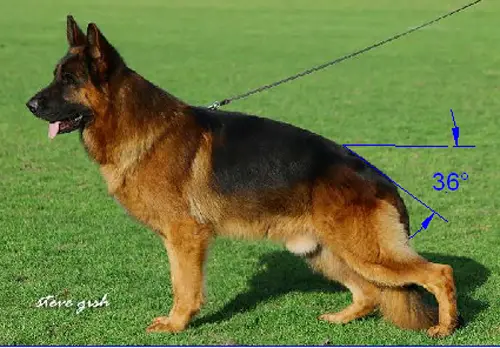
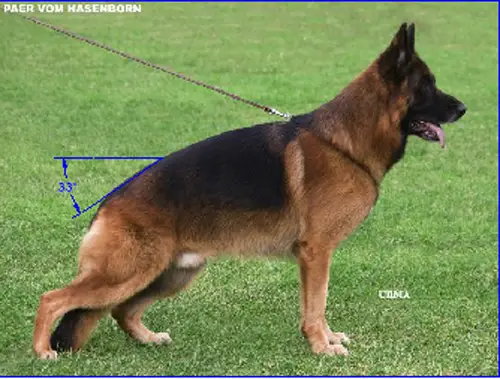
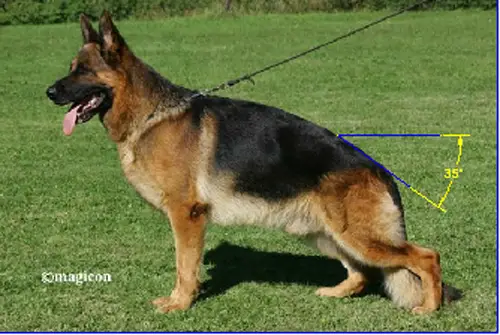



by vonissk on 12 August 2013 - 11:08
Hey Ruger Good Morning and Thanks. I sort of felt like a dummy when I put it up but there has been lots of good feedback and info. And you're right, that Ibrahim does it all!!!! Thanks Ibrahim. I'm going to owe you 2 cakes now. LOL.................. I like how you put the drawings on the pics--it is beginning to make more and more sense.
by Ibrahim on 12 August 2013 - 11:08
I love Cakes 

by Ibrahim on 12 August 2013 - 12:08
This is John's version which explains Mr. Luis Donals papers on GSD. For further reading
http://www.thenationalgsdclub.com/German%20Shepherd%20Dog%20Structure%20(john's%20version)%20%5BAutosaved%5D.pdf

Croup
In regard to Figures 1 and 2, the croups on both dogs are
basically the same. They may not look the same on the dogs and that’s because of a number of factors.
The dog in Figure 1 is deep in hind angulation and is stood overstretched and the combination of these two things causes the back to become decidedly sloped and as a consequence the difficulty in determining not just the angle of the croup but where it actually starts becomes difficult, this difficulty is further exacerbated by the slight curve in the back. In other words, because of the slope and slight curve to the back, the distinction between where the back
ends and the croup starts is less obvious and this gives the illusion that the croup on the dog in Figure 1 is longer and steeper than the dog in Figure 2.
It would be fair to say we still have a large number of dogs with steep to slightly steep and slightly short croups.
Steep croups create an inclined [and sometimes interfering with the fore feet] over reaching rear fore step with an equally reduced rear back step.
The length of the croup is best determined visually by looking at the width of the thigh
because the croup length via the pelvis length determines the combined muscle mass which is there primarily to deliver power and thrust to the hindquarter. Simply put, short croup
narrow muscles and reduced muscle mass, long croup wide muscles and greater muscle mass.
http://www.thenationalgsdclub.com/German%20Shepherd%20Dog%20Structure%20(john's%20version)%20%5BAutosaved%5D.pdf

Croup
In regard to Figures 1 and 2, the croups on both dogs are
basically the same. They may not look the same on the dogs and that’s because of a number of factors.
The dog in Figure 1 is deep in hind angulation and is stood overstretched and the combination of these two things causes the back to become decidedly sloped and as a consequence the difficulty in determining not just the angle of the croup but where it actually starts becomes difficult, this difficulty is further exacerbated by the slight curve in the back. In other words, because of the slope and slight curve to the back, the distinction between where the back
ends and the croup starts is less obvious and this gives the illusion that the croup on the dog in Figure 1 is longer and steeper than the dog in Figure 2.
It would be fair to say we still have a large number of dogs with steep to slightly steep and slightly short croups.
Steep croups create an inclined [and sometimes interfering with the fore feet] over reaching rear fore step with an equally reduced rear back step.
The length of the croup is best determined visually by looking at the width of the thigh
because the croup length via the pelvis length determines the combined muscle mass which is there primarily to deliver power and thrust to the hindquarter. Simply put, short croup
narrow muscles and reduced muscle mass, long croup wide muscles and greater muscle mass.
by Ibrahim on 12 August 2013 - 12:08
How to determine the croup, it’s length and its relationship
to the upper thigh.
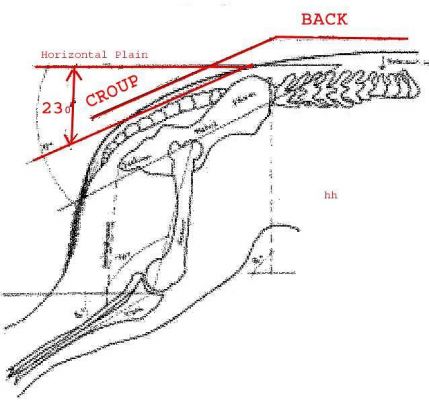
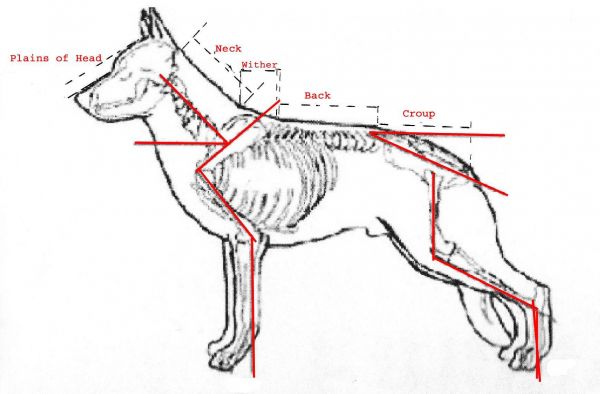
to the upper thigh.


by Blitzen on 12 August 2013 - 12:08
Ibrahim, I think it's even more difficult to determine where the croup begins in an ASL. This is CH. Kismet's Sight For Sore Eyes, Dallas. For me it's less complicated to do as you have suggested a few times, use the breadth of the thigh as the guideline. I've been told the same thing by some GSD judges. IMO the ASL's generally have excellent toplines.
%20Kismet's%20Sight%20For%20Sore%20Eyes.jpg)
%20Kismet's%20Sight%20For%20Sore%20Eyes.jpg)
Contact information Disclaimer Privacy Statement Copyright Information Terms of Service Cookie policy ↑ Back to top




